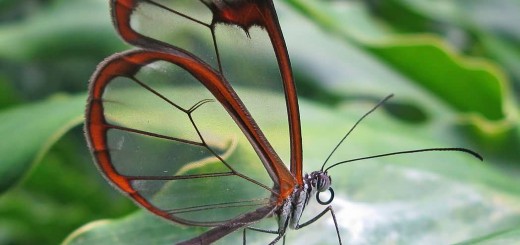Different Varieties Of Grapes For Producing Wines
Cabernet Sauvignon
Cabernet Sauvignon is one of the world’s most widely recognized red wine grape varieties. It is grown in nearly every major wine producing country among a diverse spectrum of climates from Canada’s Okanagan Valley to Lebanon’s Beqaa Valley. It was the world’s most widely planted premium red wine grape until it was surpassed by Merlot in the 1990’s.

Cabernet Sauvignon (Photo Credit: Agne27 / CC BY-SA 3.0)
The classic profile of Cabernet Sauvignon tends to be full-bodied wines with high tannins and noticeable acidity that contributes to the wine’s aging potential. In cooler climates Cabernet Sauvignon tends to produce wines with blackcurrant notes that can be accompanied by green bell pepper notes mint and cedar which will all become more pronounced as the wine ages.

Cabernet Sauvignon (Photo Credit: O.Strama / CC BY-SA 3.0)
Syrah

Syrah (Photo Credit: Chrisada Sookdhis / CC BY 2.0)
Syrah is a dark-skinned grape variety grown throughout the world and used primarily to produce red wine. The style and flavor profile of wines made from Syrah is influenced by the climate where the grapes are grown with moderate climates tending to produce medium to full-bodied wines with medium-plus to high levels of tannins and flavors of blackberry, mint and black pepper notes. In hot climates Syrah is more consistently full-bodied with softer tannin, jammier fruit and spice notes of liquorice, anise and earthy leather.

Syrah (Photo Credit: Cody and Maureen / CC BY 2.0)
In many regions the acidity and tannin levels of Syrah allows the wines produced from the grape to have favorable aging potential. Smaller amounts of Syrah are also used in the production of other wine styles, such as rosé wine, fortified wine in Port wine style and sparkling red wine. It is grown in many wine producing regions around the world with concentrations in Australia, The Rhone Valley in France and the US. It is often used as a blending grape in Spain and Italy as well. It is also planted in Portugal which favor making varietal Syrah wineWines made from Syrah are often powerfully flavoured and full-bodied. The first planting of Syrah in Washington State was done at Red Willow Vineyards in 1986.

Syrah (Photo Credit: David McSpadden / CC BY 2.0)
Merlot

Merlot (Photo Credit: David Huang / CC BY 2.0)
Merlot is a dark blue-colored wine grape variety that is used as both a blending grape and for varietal wines. Merlot is a dark blue-colored wine grape variety that is used as both a blending grape and for varietal wines. Its softness and fleshiness combined with its earlier ripening makes Merlot a popular grape for blending with the sterner later-ripening Cabernet Sauvignon which tends to be higher in tannin. Merlot is also one of the most popular red wine varietals in many markets. White Merlot is made the same way as White Zinfandel.
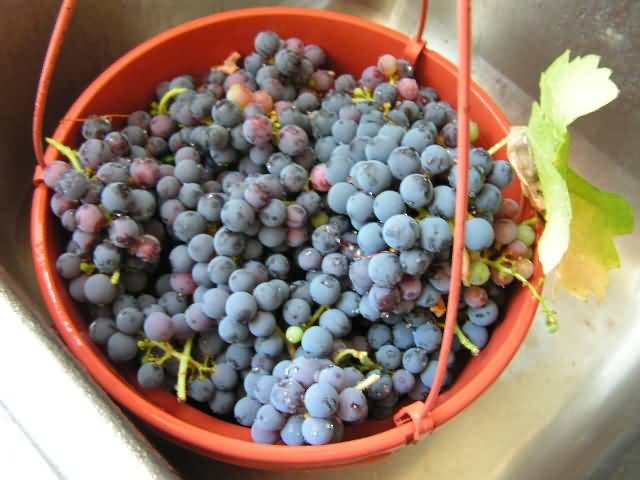
Merlot (Photo Credit: Miss Havisham’s Tea Party / CC BY 2.0)
The grapes are crushed and after very brief skin contact the resulting pink juice is run off the must and is then fermented. It normally has a hint of raspberry. White Merlot was reputedly first marketed in the late 1990’s and should not be confused with wines made from the white mutant of the grape. In Switzerland a type of White Merlot is made in the Ticino region but has been considered more a rosé. White Merlot should not be confused with the grape variety Merlot blanc which is a cross between Merlot and Folle blanche that was discovered in 1891.

Merlot (Photo Credit: David Carrero Fernández-Baillo / CC BY-SA 3.0)
Sauvignon blanc

Sauvignon blanc (Photo Credit: Stefano Lubiana / CC BY 2.0)
Sauvignon blanc is a green-skinned grape variety that originates from the Bordeaux region of France. Sauvignon blanc is planted in many of the world’s wine regions producing a crisp, dry and refreshing white varietal wine. In cooler climates the grape has a tendency to produce wines with noticeable acidity and “green flavors” of grass, green bell peppers and nettles with some tropical fruit and floral notes. In warmer climates it can develop more tropical fruit notes but risk losing a lot of aromatics from over-ripeness leaving only slight grapefruit and tree fruit notes.

Sauvignon blanc (Photo Credit: Nathan / CC BY-SA 2.0)
Sauvignon blanc was one of the first fine wines to be bottled with a screwcap in commercial quantities especially by New Zealand producers. Dry and sweet white Bordeaux including oak-aged examples from Pessac-Léognan and Graves as well as some Loire wines from Pouilly-Fumé and Sancerre are some of the few examples of Sauvignon blancs with aging potential. Since 2010 on 24 April has been International Sauvignon Blanc Day.
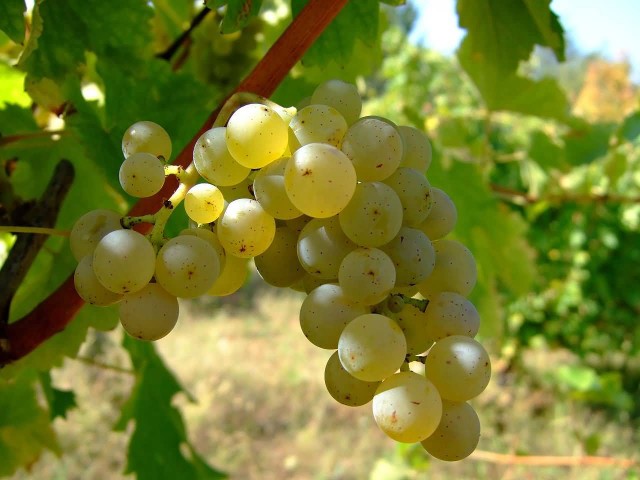
Sauvignon blanc (Photo Credit: User:Vl / CC BY-SA 3.0)
Chenin blanc
Chenin blanc is a white wine grape variety from the Loire valley of France. Its high acidity means it can be used to make everything from sparkling wine is the most widely planted variety in South Africa where it is also known as Steen. The aromas and flavor notes of Chenin blanc often include the descriptors of minerally, greengage, angelica and honey. He aging ability of sweet Loire Chenin blanc is among the longest lived in the world of wine with well-made examples from favorable vintages regularly having the potential to last for at least 100 years. Chenin blanc wines are prone to going through dumb phases where the wine closes up revealing little aroma and varietal characteristics. Lighter dry styles can pair well with light dishes such as salads, fish and chicken.
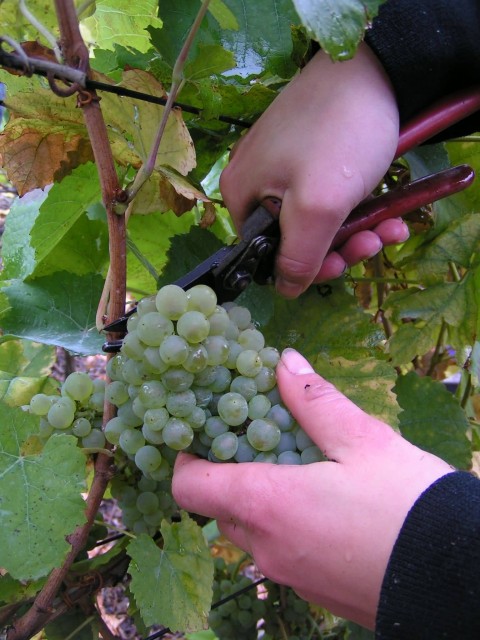
Chenin blanc (Photo Credit: Stefan Kühn / CC BY-SA 3.0)
Viognier
Viognier is a white wine grape variety. It is the only permitted grape for the French wine Condrieu in the Rhône Valley. The potential quality of Viognier is also highly dependent on viticultural practices and climate with the grape requiring a long warm growing season in order to fully ripen but not a climate that is too hot to where the grape develops high levels of sugars and potential alcohol before its aromatic notes can develop. The grape is naturally a low yielding variety which can make it a less economically viable planting for some vineyards. The highly aromatic and fruit forward nature of the grape allows Viognier to pair well with spicy foods such as Thai cuisine.
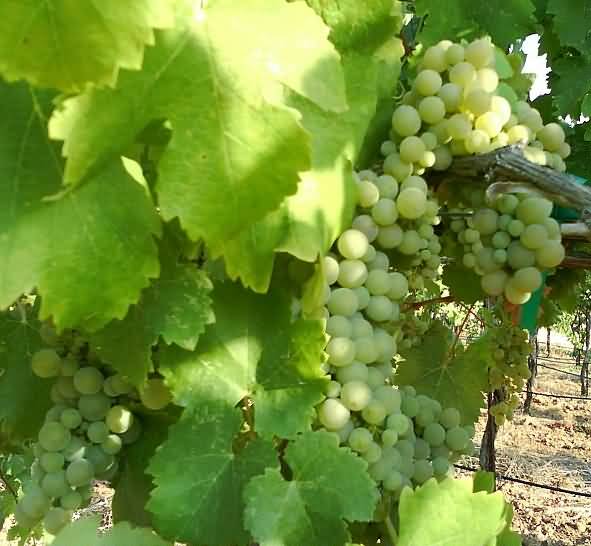
Viognier (Photo Credit: Anachronist / Public Domain)











